Dr. Gauthier's Quantitative Physiological Imaging Lab specializes in quantitative imaging of the cerebral vasculature using MRI and further development of these techniques. Mapping vascular processes such as cerebral blood flow and oxygenation provide quantitative insights into brain function in health and disease. Quantitative MRI methods are used in the lab to investigate links between brain ageing and cognition, how cardiovascular disease affects the brain and how the brain adapts with behavioural interventions. The long-term goal of work conducted in the lab is to improve our understanding of vascular changes across the lifespan and improve brain health in later life and disease.
Quantitative Physiological Imaging Lab
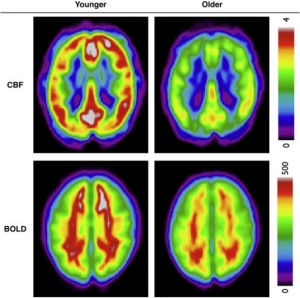 Cerebral bloodflow (CBF) and blood oxygen level-dependent (BOLD) measurements.
Cerebral bloodflow (CBF) and blood oxygen level-dependent (BOLD) measurements.
Our research interests include
- Cerebral metabolic and vascular imaging,
- The impact of ageing and lifestyle on the brain,
- The impact of cardiovascular diseases on brain health,
- The impact of obesity on women's brains,
- Functional MRI BOLD signal modelling and
- Quantitative imaging of plasticity.
Some of our current projects are
- Quantitative MRI of cerebrovascular and microstructural health in cardiovascular diseases,
- Investigation of the effects of aerobic exercise and cognitive interventions on brain function and cognition in older adults,
- Developing of quantitative susceptibility mapping methods to estimate oxygen extraction fraction in the venous vasculature and
- Investigation of motor plasticity in the healthy brain using quantitative fMRI.
Principal investigator
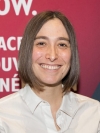
Claudine Gauthier
Assistant Professor, Physics
Co-op Director, Physics
Dr. Gauthier completed her Ph.D. investigating cerebral physiology in healthy aging using quantitative fMRI under the supervision of Richard Hoge at the University of Montreal. After her Ph.D., Dr. Gauthier completed a postdoctoral position in Neurophysics and Neurology at the Max-Planck Institute for Human Cognitive and Brain Sciences in Leipzig, under the supervision of Drs. Robert Turner and Arno Villringer. Dr. Gauthier joined Concordia University as an Assistant Professor in 2014. She is currently associate professor and holds the Henry J.M. Barnett New Investigator Award from the Heart and Stroke Foundation of Canada. She is also a researcher at the Montreal Heart Institute, where she holds the Michal and Renata Hornstein Chair in Cardiovascular Imaging. Her work is funded by the Natural Sciences and Engineering Research Council, the Heart and Stroke Foundation, the Canadian Funds for Innovation and the Québec Bio-Imaging Network.
Current members

Dalia Sabra
Lab coordinator
Email: dalia.sabra1@gmail.com
Dalia Sabra obtained a Bachelor’s degree in Psychology with specialization from Concordia University in 2016. Her interests in brain imaging led her to start working as a research assistant in the quantitative physiological imaging lab.
Her work in Dr. Gauthier's lab involved the use of magnetic resonance imaging (MRI) to develop new markers of vascular and metabolic health in the brain. More specifically, her first project involved understanding the link between cerebrovascular health and exercise in healthy older adults by investigating the cognitive and vascular changes that occur with different types of exercise interventions. As part of this project, she also performed MRI acquisitions before and after a 12-week physical activity program. She also helped build an automated gas-handling breathing system to modulate fractional O₂ and Co₂ concentrations simultaneously to induce hypercapnia to modulate cerebral blood flow.
In 2019, Dalia completed her Master’s degree in Biomedical Science under the supervision of Dr. Louis Bherer and Dr. Claudine Gauthier at Université de Montréal. Her master's work in brain imaging aimed at investigating specific physiological markers of aging on the brain such as cerebral blood flow, cerebrovascular reactivity and aortic measures, using calibrated fmri. More specifically, her thesis work focused on the sex differences observed among those hemodynamic measures.
She is currently involved in other projects that are underway at the Montreal Heart Institute one of which aims to characterize the impact of cardiovascular disease on brain health using recent advances in quantitative Magnetic Resonance Imaging. She is also coordinating a project that aims to investigate the effect of menopause on vascular and brain health.
Publications
- Sabra D, Intzandt B, Desjardins-Crepeau L, Langeard A, Steele CJ, Frouin F, et al. (2021) Sex moderations in the relationship between aortic stiffness, cognition, and cerebrovascular reactivity in healthy older adults. PLoS ONE 16(9): e0257815. https://doi.org/10.1371/journal.pone.0257815
- Badji, A., de la Colina, A. N., Boshkovski, T., Sabra, D., Karakuzu, A., Robitaille-Grou, M. C., Gros, C., Joubert, S., Bherer, L., Lamarre-Cliche, M., Stikov, N., Gauthier, C. J., Cohen-Adad, J., & Girouard, H. (2020). A Cross-Sectional Study on the Impact of Arterial Stiffness on the Corpus Callosum, a Key White Matter Tract Implicated in Alzheimer's Disease. Journal of Alzheimer's disease : JAD, 10.3233/JAD-200668.. https://doi.org/10.3233/JAD-200668
- Sabra, D. (2020). Arterial stiffness and brain health: investigating the impact of sex-related differences (Master's thesis). http://hdl.handle.net/1866/23672
- Badji A., Sabra D., Bherer L., Cohen- Adad J., Girouard H., Gauthier C.J. (2019). Arterial Stiffness and Brain Integrity: A review of MRI findings. Journal of Ageing Research Reviews, 4(53) 100907 doi:10.1016/j.arr.2019.05.001
- M.-A. Argentino and D. Sabra, “The Extremist Mind: A Neuropsychological Explanation of Religion and Violence,” in A. Gagné, S. Loumakis, and C. A. Miceli (eds), The Global Impact of Religious Violence. Scholarly Engagement with One of Today’s Most Pressing Issues. Eugene: OR., Wipf and Stock.
- Intzandt B., Sabra D., Foster C., Desjardins-Crepeau L., Hoge R.D., Steele C.J., Bherer L., Gauthier C.J. (2019). Higher fitness level is associated with lower cerebrovascular reactivity and perfusion in healthy older adults. Journal of Cerebral Blood Flow and Metabolism doi:10.1177/0271678X19862873
- A Noriega de la Colina, A Badji, D Sabra, A Karakuzu, S Joubert, L Bherer, M Lamarre-Cliche, C Gauthier, J Cohen-Adad, H Girouard (2019). Augmentation index is a predictor of cerebral blood flow across global grey matter in the elderly. Journal of Cerebral Blood Flow and Metabolims, 39, 134-135.
- A Badji, A Noriega de la Colina, D Sabra, A Karakuzu, L Bherer, M Lamarre-Cliche, N Stikov, C Gauthier, J Cohen-Adad, H Girouard. Arterial stiffness, cerebral blood flow and white matter integrity in the elderly: an arterial spin labelling and Neurite orientation dispersion and density study. Journal of Cerebral Blood Flow and Metabolism, 39, 323-324.
- A Badji, A Noriega de la Colina, D Sabra, A Karakuzu, L Bherer, M Lamarre-cliche, N Stikov, C Gauthier, J Cohen-Adad, H Girouard. The relationship between cognitive function, cortical blood flow and sub-cortical white-matter health in the elderly. Journal of Cerebral Blood Flow and Metabolism, 39, 29-30.
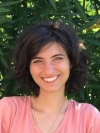
Chiara Giacosa
Postdoctoral fellow
Email: chiagiarasa@gmail.com
Hello, I am Dr. Giacosa, I just started a postdoc at Dr. Gauthier’s lab. My goal is to combine several neuroimaging and statistical methods (QSM, DWI, T1, Bayesian) to better understand the brain's physiology. During my PhD, I investigated the white matter plasticity in dancers and musicians, using multiple diffusion MRI methods.
With my background in Physics and Neuroscience, I developed a keen interest in trying to understand the physiological processes that underlie MRI analyses by combining multiple metrics and imaging approaches.
My other research interests include the effects of training on brain plasticity, especially aimed at boosting neurodevelopment in healthy kids, or at identifying the most appropriate interventions for different types of disorders.
Current research topics
- Using multi-methodological methods on 7T MRI data to investigate the physiological processes that underlie brain functioning and plasticity in healthy individuals.
- Imaging the link between cardiorespiratory fitness, oxidative stress and cerebral health in cardiovascular disease.
Publications
- Giacosa C., Karpati F.J., Foster N.E., Penhune V.B., Hyde K.L. (under final revisions) The descending motor tracts are different in dancers and musicians, Brain Structure and Function.
- Karpati F.J., Giacosa C., Foster N.E., Penhune V.B., Hyde K.L. (2018) Gray Matter Structural Covariance Networks are Different in Dancers, Frontiers in Human Neuroscience.
- Karpati F.J., Giacosa C., Foster N.E., Penhune V.B., Hyde K.L. (2017) Dance and music share gray matter structural correlates, Brain Research.
- Giacosa C., Karpati F.J., Foster N.E., Penhune V.B., Hyde K.L. (2016) Dance and music training have different effects on white matter diffusivity in sensorimotor pathways, Neuroimage.
- Karpati F.J., Giacosa C., Foster N.E., Penhune V.B., Hyde K.L. (2016) Sensorimotor integration is enhanced in dancers and musicians, Experimental Brain Research.
- Karpati F.J., Giacosa C., Foster N.E., Penhune V.B., Hyde K.L. (2015) Dance and the brain: a review, Annual New York Academy of Sciences.
- Benedetti F., Poletti S., Radaelli D., Pozzi E., Giacosa C., Smeraldi E. (2014) Adverse childhood experiences and gender influence treatment seeking behaviors in obsessive-compulsive disorder, Comprehensive Psychiatry.
- Benedetti F., Giacosa C., Radaelli D., Poletti S., Pozzi E., Dallaspezia S, Falini A., Smeraldi E. (2012) Widespread changes of white matter microstructure in obsessive-compulsive disorder: Effect of drug status. European Neuropsychopharmacology.
- Benedetti F., Poletti S., Radaelli D., Pozzi E., Giacosa C., Ruffini C., Falini A., Smeraldi E. (2012) Caudate Gray Matter Volume in Obsessive-Compulsive Disorder Is Influenced by Adverse Childhood Experiences and Ongoing Drug Treatment. Journal of Clinical Psychopharmacology.
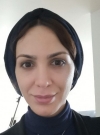
Fatemeh Razavipour
Ph.D. student
Characterization of oxygen and glucose metabolism within functional connector hubs in healthy controls and epilepsy patients
Email: fatehmeh.razavipour@concordia.ca
Fatemeh Razavipour received her bachelor degree in Electrical and Computer Engineering and Master degree in Artificial Intelligence in Shiraz University in Iran. She is now pursuing a PhD of Physics in Concordia University supervised by Dr. Christophe Grova and Dr. Claudine Gauthier.
Fatemeh’s general research interests are neuroimaging, statistical signal processing, machine learning and pattern recognition. Her Ph.D. research focused on resting state fMRI, calibrated fMRI and PET to investigate the brain’s metabolism and connectivity especially in epilepsy.
Publications
- Kouchaki, S., Boostani, R., & Razavipour, F. (2018). Fatigue detection using the strength of dominant EEG source: A beamforming approach. Biomedical Engineering: Applications, Basis and Communications, 30(03), 1850023.
- Aboonasr, S. F. G., Zamani, A., Razavipour, F., & Boostani, R. (2017). Earthquake hazard assessment in the Zagros Orogenic Belt of Iran using a fuzzy rule-based model. Acta Geophysica, 65(4), 589-605.
- Razavipour, F., & Sameni, R. (2015). A study of event related potential frequency domain coherency using multichannel electroencephalogram subspace analysis. Journal of neuroscience methods, 249, 22-28.
- Razavipour, F., Boostani, R., Kouchaki, S., & Afrasiabi, S. (2014). Comparative application of non-negative decomposition methods in classifying fatigue and non-fatigue states. Arabian Journal for Science and Engineering, 39(10), 7049-7058.
- Razavipour, F., Haghpanahi, M., & Sameni, R. (2013, September). Fetal QRS complex detection using semi-blind source separation framework. In Computing in Cardiology 2013 (pp. 181-184). IEEE.
- Razavipour, F., & Sameni, R. (2013). A general framework for extracting fetal magnetoencephalogram and audio-evoked responses. Journal of neuroscience methods, 212(2), 283-296.
- Afrasiabi, S., Boostani, R., Zand, F., & Razavipour, F. (2012). Introducing a novel index for measuring depth of anesthesia based on visual evoked potential (vep) features. Iranian Journal of Science and Technology. Transactions of Electrical Engineering, 36(E2), 131.

Julia Huck
Ph.D. student
Resting-state networks – bias and variability caused by vein proximity
Email: julia.huck@mail.concordia.ca
Julia completed her Bachelor’s and Master’s degrees in medical engineering, with a focus on imaging techniques. During her undergraduate studies, she had the opportunity to work part-time as a medical technical assistant at a radiological institute in Germany to deepen her knowledge and understanding of medical imaging. Her master’s thesis was concentrated on medical image registration, and after finishing her degree, Julia completed a six-month internship at Siemens Healthcare at Princeton in New Jersey, USA.
In 2016, Julia began her doctoral degree in physics under the supervision of Drs. Claudine Gauthier (Concordia University, Montreal, Canada) and Pierre-Louis Bazin (Max Planck Institute, Leipzig, Germany). Her doctoral work focuses on the use of 7T quantitative susceptibility mapping images to extract the venous vasculature and estimate the oxygen extraction fraction, which could be used as a biomarker for aging-related diseases. Further, Julia is looking at the influence of the venous vasculature on resting-state functional magnetic resonance imaging data. Julia is also involved in projects at the PERFORM Centre (Concordia), the Montreal Heart Institute, and McGill University.
Publications
- Intzandt B, Vrinceanu T, Huck J, Vincent T, Montero-Odasso M, Gauthier CJ, Bherer L (2021). Comparing the effects of cognitive vs. Exercise training on brain MRI outcomes in healthy older adults: a systematic review. Published in Neuroscience and Biobehavioral Reviews, 128:511-33 doi: 10.1016/j.neubiorev.2021.07.003
- Jäger ATP, Huntenburg JM, Tremblay SA, Schneider U, Grahl S, Huck J, Tardif CL, Villringer A, Gauthier CJ, Bazin PL, Steele CJ (2021). Motor sequences; separating the sequence from the motor. A longitudinal rsfMRI study. Published in Brain Structure and Function. doi: 10.1007/s00429-021-02412-7
- Tremblay SA, Jäger ATP, Huck J, Giacosa C, Beram S, Schneider U, Grahl S, Villringer A, Tardif CL, Bazin PL, Steele CJ, Gauthier CJ (2021). White matter microstructural changes in short-term learning of a continuous visuomotor sequence. Published in Brain Structure and Function 226, 1677–1698. doi: 10.1007/s00429-021-02267-y
- Huck J., Wanner Y., Fan A.P., Schmidt AT., Grahl S., Schneider U., Villringer A., Steele C.J., Tardif C.L., Bazin PL, Gauthier C.J. (2019) High resolution atlas of the venous brain vasculature from 7 T quantitative susceptibility maps. Brain Struct Funct 224:2467–2485. doi:10.1007/s00429-019-01919-4
- Huck J., Steele C.J., Jäger AT., Fan A.P., Grahl S., Tardif C.L., Schneider U.,Villringer A., Bazin PL., Gauthier C.J.;The influence of draining veins on apparent grey matter volume changes caused by hypercapnia, Proc. Intl. Soc. Mag. Reson. Med. 27 (2019)
- Huck J., Wanner Y., Fan A.P., Schmidt AT., Grahl S., Schneider U., Villringer A., Steele C.J., Tardif C.L., Bazin PL, Gauthier C.J.; High resolution atlasing of the venous brain vasculature from 7T quantitative susceptibility, Proc. Intl. Soc. Mag. Reson. Med. 26 (2018)
- Weinmann M., Huck J., Nisch W., Stett A., Bucher V., Urban G.: Flexible encapsulation coatings of electrically active micro implants; Galvanotechnik 105(2):254-262 February 2014
- Bucher, V., Huck, J., Weinmann, M., Nisch, W., Urban, G.: Flexible encapsulation layers for electrically active microimplants, GIT Labor-Fachzeitschrift 9/2012
- Weinmann, M., Huck, J., Nisch, W., Stett, A., Urban, G., Bucher, V. (2012): Flexible encapsulation coatings of electrically active micro implants. In: Jahrbuch Oberflächentechnik 2012, Eugen G. Leuze Verlag. 68: 317 - 325. (68), ISBN 978-3-87480-274-1, S. 317–325.

Safa Sanami
Ph.D. student
Quantitative imaging of the impacts of cardiovascular disease on brain and cognition
Email: s.sanami70@gmail.com
I have completed my Masters degree in Biomedical Engineering and my research centered on image processing techniques. I have worked on different methods in fMRI data analysis and effective connectivity among different brain regions using dynamic casual modeling method. My main research interests are: cognitive and affective neuroscience, brain mapping, functional and effective connectivity analysis in brain, and fMRI data analysis.
Publications
- Saillant, K., Intzandt, B., Bérubé, B., Sanami, S., Gauthier, C., & Bherer, L. (2022). Mastering the Relationship between the Body and the Brain? The Case of a Female Master Athlete. Experimental Aging Research, 1-17.
- S. Sanami, H. Azarnoush, F. Hadaeghi, “Functional connectivity in brain regions during negative emotion generation”, 5th congress of Iranian human brain imaging (2018), Tehran, Iran.
- K. Babanezhad, H. Azarnoush, S. Sanami, “Automatic liver segmentation in MR and CE-MR images with LCVAC-GAV approach using mean-shape initialization technique”, IEEE, 25th national and 3rd international conference on biomedical engineering (2018), Tehran, Iran.
- S. Sanami, K. Babanezhad, A. Rezaei, R. Afshari “IVUS image segmentation using Gaussian Mixture Model for Localized Region based active contour”, 5th International conference in SCIENCE & ENGINEERING (ices 2017), Paris, France.
- S. Sanami, F. Hadaeghi, S. Jafari , “Towards an image processing study of diabetic retinopathy: Unsupervised detection of microaneurysms in color fundus images”, 8th Imamia medics international conference (IMI 2014), Tehran, Iran.

Stéfanie Tremblay
Ph.D. student
Characterization of the impact of cardiovascular disease on brain health using quantitative magnetic resonance imaging
Email: stefanie.tremblay@mail.concordia.ca
My name is Stéfanie Tremblay. I have a bachelor’s degree in Exercise Science and I certified as an Athletic therapist. Being an athlete on the national judo team for several years, this career path seemed obvious and in line with my interests at the time. However, as my athletic career neared the end, I became increasingly interested in understanding pathology, especially neurological disorders. That’s why I decided to pursue my studies at the graduate level where my research focus was in fundamental neurophysiology. More specifically, I investigated the role of the cerebellum on non-motor areas of the frontal cortex in rodents. I met Dr. Gauthier in the last year of my Master’s degree and found that her research in brain imaging aligned perfectly with my interests in using novel techniques to better understand brain health in humans. I thus started my PhD in Dr. Gauthier’s lab in January 2019.
My research project aims at characterizing the impact of cardiovascular disease on brain health using recent advances in quantitative Magnetic Resonance Imaging (MRI). I will focus mainly on how poor cardiovascular health affects white matter microstructure, using diffusion MRI and Magnetization Transfer Imaging.
Publications
- Tremblay S A, Jäger AT, Huck J, Giacosa C, Beram S, Schneider U, Grahl S, Villringer A, Tardif CL, Bazin PL, Steele CJ, Gauthier CJ (2021) White matter microstructural changes in short-term learning of a continuous visuomotor sequence. Brain Struct Funct Apr 22. doi: https://doi.org/10.1007/s00429-021-02267-y
- Tremblay S A, Huck J, Giacosa C, Beram S, Schneider U, Grahl S, Jäger A-T, Villringer A, Tardif C L, Bazin P-L, Steele C J, Gauthier C J (2020). White matter microstructural changes in short-term learning of a continuous visuomotor sequence. Organization for Human Brain Mapping (OHBM). Online. (Poster presentation from June 24-July 2nd)
- Tremblay S A, Chapman C A & Courtemanche R (2019). State-dependent entrainment of prefrontal cortex local field potential activity following patterned stimulation of the cerebellar vermis. Frontiers in Systems Neuroscience.
- Tremblay S A, Huck J, Beram S, Schneider U, Grahl S, Villringer A, Tardif C L, Bazin P-L, Steele C J, Gauthier C J (2019). The influence of vein location and diameter from the Venous Neuroanatomy (VENAT) atlas on fractional anisotropy (FA). Imaging Cerebral Physiology (ICP) Network Symposium. Baltimore, Maryland, USA. (Poster presentation on September 15th, 2019)
- Frederick A, Bourget-Murray J, Tremblay S & Courtemanche R (2019). Local Field Potential, Synchrony of. Encyclopedia of Computational Neuroscience, 2nd edition. (Chapter published on June 22nd, 2019)
- Tremblay S, Chapman C A & Courtemanche R (2018). Enhanced cerebello-cortical coherence of local field potentials during patterned stimulation of the cerebellar vermis. Society for Neuroscience Annual Meeting 2018. San Diego, CA, USA. (Poster presentation on November 7th, 2019)
- Tremblay S, Robinson J, Arrieta R & Courtemanche R (2017). Cerebellar LFP oscillations: mapping and extra-cerebellar network interactions. Cerebellum Gordon Research Conference. Lewinston, Maine, USA. (Poster presentation on August 2-3rd, 2017)

My name is Ali Rezaei and I am currently a PhD candidate in Physics (MRI Physics) at Concordia University with focus in QSM applications in qMRI methods.
I have experience of working at the National Brain Mapping Laboratory (NBML) of Iran as the MRI image processing (task/rest-fMRI, 2D/3D MRS & Relaxometry) and Virtual Reality Specialist (VR task design using C# and Unity, designing multimodal brain mapping pipelines such as VR-EEG, VR-fNIRS and VR-EMG). Furthermore, I do R&D activities such as designing MR compatible device like fMRI optical response grips and repairing MR compatible headset. Beside my technical activities, I have recently designed a customized automatic reporting system for the National Brain Mapping Laboratory.
I was awarded MSc ad BSc degree from the Department of Biomedical Engineering, Amirkabir University of Technology. I researched Cardiac Mechanics using MR imaging and Fluid Dynamics using analogy between electrical and mechanical engineering.
My most recent publication is 'CMR tagging pattern for 3D tracking: Radial-zSPAMM'.
Publications
- Ali Rezaei, Abbas N. Moghaddam: "CMR tagging pattern for 3D tracking: Radial-zSPAMM". SCMR, 2016.
- Safa Sanami, Roya Afshari, Ali Rezaei, Kian Babanezhad. "IVUS images segmentation using Gaussian mixture model for localized region-based active contour". 5th International conference in science and engineering (ICES), 2017.
- Ali Rezaei, Mohammad Abdi Shektaei, Abbas Nasiraei Moghadam, "Electrical simulation of blood pressure and flow wave propagation and reflection in human arterial tree using distributed model and analysis of pulsatile power according to heart rate," The First Conference on Novel Approaches of Biomedical Engineering in Cardiovascular Disease, Iran (Islamic Republic of), 22- 23 January 2015.

My name is Zacharie Potvin-Jutras and I completed my bachelor's degree in Kinesiology and Clinical Exercise Physiology at Concordia University in 2022. I am currently a master’s in Physics candidate under the supervision of Claudine Gauthier at Concordia University.
I was part of the QPI laboratory as a research assistant and became interested in the research projects. My physiology background and personal interest in physics aligned well with the subjects of study of Dr. Gauthier’s lab. My research project aims to evaluate white matter microstructure differences in long-covid patients measured through Magnetic Resonance Imaging (MRI) techniques including Diffusion Weighted Imaging and Magnetization Transfer Imaging.

Lindsay received her bachelor's degree in nursing from McGill University and subsequently worked as a nurse in neurological critical care. She returned to university to complete a bachelor degree in honours physics at Concordia. During this degree, she studied and modelled the behaviours of microbubble ultrasound contrast agents under the supervision of Dr Helfield as an NSERC USRA recipient. She studied under Dr Mansbach for her undergraduate thesis where she performed molecular dynamics simulations to investigate the secondary structure of an antimicrobial peptide. After her bachelor in physics, she worked as a research assistant in Dr Gauthier’s lab which motivated her to start her Masters in physics. Co-supervised by Drs Mansbach and Gauthier, she is working to develop a new methodology for identifying underlying patterns responsible for large-scale functional differences between brains. Specifically, she will use network graphs of brain imaging to train deep learning models. She will use the models to simulate new data, model the data as flow networks and analyse these networks using a topological technique called persistent homology. She continues to work as a neuro ICU nurse.
Collaborators
Audrey Fan - Stanford University
Chris Steele - McGill University, Douglas Institute
Christine Tardif - McGill University
Christophe Grova - Concordia University
Louis Bherer - Université de Montréal
Pierre-Louis Bazin - Nederlands Herseninstituut
Alumni
Brittany Intzandt (Ph.D.)
Effects of fitness on vascular brain health in aging and the underlying physiological mechanisms for these relationships
Dalia Sabra (M.Sc.)
Arterial stiffness and brain health: investigating the impact of sex-related differences
Catherine Foster (postdoctoral fellow)
Metabolic and cerebrovascular consequences of cardiovascular disease
Avner Fitterman (M.Sc.)
Learning-induced plasticity in vascular properties in the human brain
3T MRI
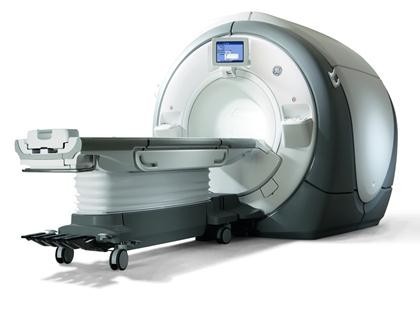
The lab uses a 3T MRI system to study brain structure and function. Several of our most used methods are:
- Arterial Spin Labelling (ASL): ASL enables direct quantification of cerebral blood flow without the need for tracers and is extremely valuable in studies where the brain’s vasculature may be compromised.
- Blood-oxygen-level dependent (BOLD): BOLD signal imaging is based on changes in the concentration of oxygenated haemoglobin in the brain. This method is used in calibrated fMRI along with blood flow measures to quantify additional processes such as cerebral oxygen metabolism.
Respiratory gas system
Our lab also houses a custom-built system to deliver altered concentrations of respiratory gases during MRI. By increasing or decreasing the level of inspired oxygen and carbon dioxide we can measure cerebral vascular function throughout the brain.
- Ashikuzzaman, M., Belasso, C., Golam Kibria, M., Bergdahl, A., Gauthier, C. J. & Rivaz, H. Low Rank and Sparse Decomposition of Ultrasound Color Flow Images for Suppressing Clutter in Real-Time. In press (2019).
- Huck, J., Wanner, Y., Fan, A. P., Jäger, A.-T., Grahl, S., Schneider, U., Villringer, A., Steele, C. J., Tardif, C. L., Bazin, P.-L. & Gauthier, C. J. High resolution atlas of the venous brain vasculature from 7 T quantitative susceptibility maps. Brain Struct Funct 224, 2467–2485 (2019). doi:10.1007/s00429-019-01919-4
- Intzandt, B., Sabra, D., Foster, C., Desjardins-Crépeau, L., Hoge, R. D., Steele, C. J., Bherer, L. & Gauthier, C. J. Higher cardiovascular fitness level is associated with lower cerebrovascular reactivity and perfusion in healthy older adults. Journal of Cerebral Blood Flow & Metabolism 0271678X19862873 (2019). doi:10.1177/0271678X19862873
- Badji, A., Sabra, D., Bherer, L., Cohen-Adad, J., Girouard, H. & Gauthier, C. J. Arterial stiffness and brain integrity: A review of MRI findings. Ageing Research Reviews 53, 100907 (2019). doi:10.1016/j.arr.2019.05.001
- Ashikuzzaman, M., Gauthier, C. J. & Rivaz, H. Global Ultrasound Elastography in Spatial and Temporal Domains. IEEE Transactions on Ultrasonics, Ferroelectrics, and Frequency Control 66, 876–887 (2019). doi:10.1109/TUFFC.2019.2903311
- Fan, A. P., Khalil, A. A., Fiebach, J. B., Zaharchuk, G., Villringer, A., Villringer, K. & Gauthier, C. J. Elevated brain oxygen extraction fraction measured by MRI susceptibility relates to perfusion status in acute ischemic stroke. Journal of Cerebral Blood Flow & Metabolism 0271678X19827944 (2019). doi:10.1177/0271678X19827944
- Gauthier, C. J. & Fan, A. P. BOLD signal physiology: Models and applications. NeuroImage 187, 116–127 (2019). doi:10.1016/j.neuroimage.2018.03.018
- Garrett, D. D., Lindenberger, U., Hoge, R. D. & Gauthier, C. J. Age differences in brain signal variability are robust to multiple vascular controls. Scientific Reports 7, 10149 (2017). doi:10.1038/s41598-017-09752-7
- Tardif, C. L., Steele, C. J., Lampe, L., Bazin, P.-L., Ragert, P., Villringer, A. & Gauthier, C. J. Investigation of the confounding effects of vasculature and metabolism on computational anatomy studies. NeuroImage 149, 233–243 (2017). doi:10.1016/j.neuroimage.2017.01.025
- Guidi, M., Huber, L., Lampe, L., Gauthier, C. J. & Möller, H. E. Lamina-dependent calibrated BOLD response in human primary motor cortex. NeuroImage 141, 250–261 (2016). doi:10.1016/j.neuroimage.2016.06.030
- Fan, A. P., Schäfer, A., Huber, L., Lampe, L., Smuda, S. von, Möller, H. E., Villringer, A. & Gauthier, C. J. Baseline oxygenation in the brain: Correlation between respiratory-calibration and susceptibility methods. NeuroImage 125, 920–931 (2016). doi:10.1016/j.neuroimage.2015.11.007
- Tardif, C. L.*, Gauthier, C. J.*, Steele, C. J., Bazin, P.-L., Schäfer, A., Schaefer, A., Turner, R. & Villringer, A. Advanced MRI techniques to improve our understanding of experience-induced neuroplasticity. NeuroImage 131, 55–72 (2016). doi:10.1016/j.neuroimage.2015.08.047 (* Shared first authorship)
- Dupuy, O., Gauthier, C. J., Fraser, S. A., Desjardins-Crèpeau, L., Desjardins, M., Mekary, S., Lesage, F., Hoge, R. D., Pouliot, P. & Bherer, L. Higher levels of cardiovascular fitness are associated with better executive function and prefrontal oxygenation in younger and older women. Front. Hum. Neurosci. 9, 66 (2015). doi:10.3389/fnhum.2015.00066
- Gorgolewski, K. J., Mendes, N., Wilfling, D., Wladimirow, E., Gauthier, C. J., Bonnen, T., Ruby, F. J. M., Trampel, R., Bazin, P.-L., Cozatl, R., Smallwood, J. & Margulies, D. S. A high resolution 7-Tesla resting-state fMRI test-retest dataset with cognitive and physiological measures. Scientific Data 2, 140054 (2015). doi:10.1038/sdata.2014.54
- Huber, L., Goense, J., Kennerley, A. J., Trampel, R., Guidi, M., Reimer, E., Ivanov, D., Neef, N., Gauthier, C. J., Turner, R. & Möller, H. E. Cortical lamina-dependent blood volume changes in human brain at 7T. NeuroImage 107, 23–33 (2015). doi:10.1016/j.neuroimage.2014.11.046
- Gauthier, C. J., Lefort, M., Mekary, S., Desjardins-Crépeau, L., Skimminge, A., Iversen, P., Madjar, C., Desjardins, M., Lesage, F., Garde, E., Frouin, F., Bherer, L. & Hoge, R. D. Hearts and minds: linking vascular rigidity and aerobic fitness with cognitive aging. Neurobiology of Aging 36, 304–314 (2015). doi:10.1016/j.neurobiolaging.2014.08.018
- Krieger, S. N., Gauthier, C. J., Ivanov, D., Huber, L., Roggenhofer, E., Sehm, B., Turner, R. & Egan, G. F. Regional reproducibility of calibrated BOLD functional MRI: Implications for the study of cognition and plasticity. NeuroImage 101, 8–20 (2014). doi:10.1016/j.neuroimage.2014.06.072
- Krieger, S. N., Ivanov, D., Huber, L., Roggenhofer, E., Sehm, B., Turner, R., Egan, G. F. & Gauthier, C. J. Using carbogen for calibrated fMRI at 7Tesla: Comparison of direct and modelled estimation of the M parameter. NeuroImage 84, 605–614 (2014). doi:10.1016/j.neuroimage.2013.09.035
- Gauthier, C. J., Madjar, C., Desjardins-Crépeau, L., Bellec, P., Bherer, L. & Hoge, R. D. Age dependence of hemodynamic response characteristics in human functional magnetic resonance imaging. Neurobiology of Aging 34, 1469–1485 (2013). doi:10.1016/j.neurobiolaging.2012.11.002
- Gauthier, C. J., Desjardins-Crépeau, L., Madjar, C., Bherer, L. & Hoge, R. D. Absolute quantification of resting oxygen metabolism and metabolic reactivity during functional activation using QUO2 MRI. NeuroImage 63, 1353–1363 (2012). doi:https://doi.org/10.1016/j.neuroimage.2012.07.065
- Tancredi, F. B., Gauthier, C. J., Madjar, C., Bolar, D. S., Fisher, J. A., Wang, D. J. J. & Hoge, R. D. Comparison of pulsed and pseudocontinuous arterial spin-labeling for measuring CO2-induced cerebrovascular reactivity. Journal of Magnetic Resonance Imaging 36, 312–321 (2012). doi:10.1002/jmri.23658
- Madjar, C., Gauthier, C. J., Bellec, P., Birn, R. M., Brooks, J. C. W. & Hoge, R. D. Task-related BOLD responses and resting-state functional connectivity during physiological clamping of end-tidal CO2. NeuroImage 61, 41–49 (2012). doi:10.1016/j.neuroimage.2012.02.080
- Gauthier, C. J. & Hoge, R. D. Magnetic resonance imaging of resting OEF and CMRO2 using a generalized calibration model for hypercapnia and hyperoxia. NeuroImage 60, 1212–1225 (2012). doi:10.1016/j.neuroimage.2011.12.056
- Gauthier, C. J. & Hoge, R. D. A generalized procedure for calibrated MRI incorporating hyperoxia and hypercapnia. Human Brain Mapping 34, 1053–1069 (2013). doi:10.1002/hbm.21495
- Gauthier, C. J., Madjar, C., Tancredi, F. B., Stefanovic, B. & Hoge, R. D. Elimination of visually evoked BOLD responses during carbogen inhalation: Implications for calibrated MRI. NeuroImage 54, 1001–1011 (2011). doi:10.1016/j.neuroimage.2010.09.059
- Cerebral Hemodynamics in Aging: Effects of Fitness and Obesity
- White matter microstructure associated with functional connectivity changes following short-term learning of a visuomotor sequence

